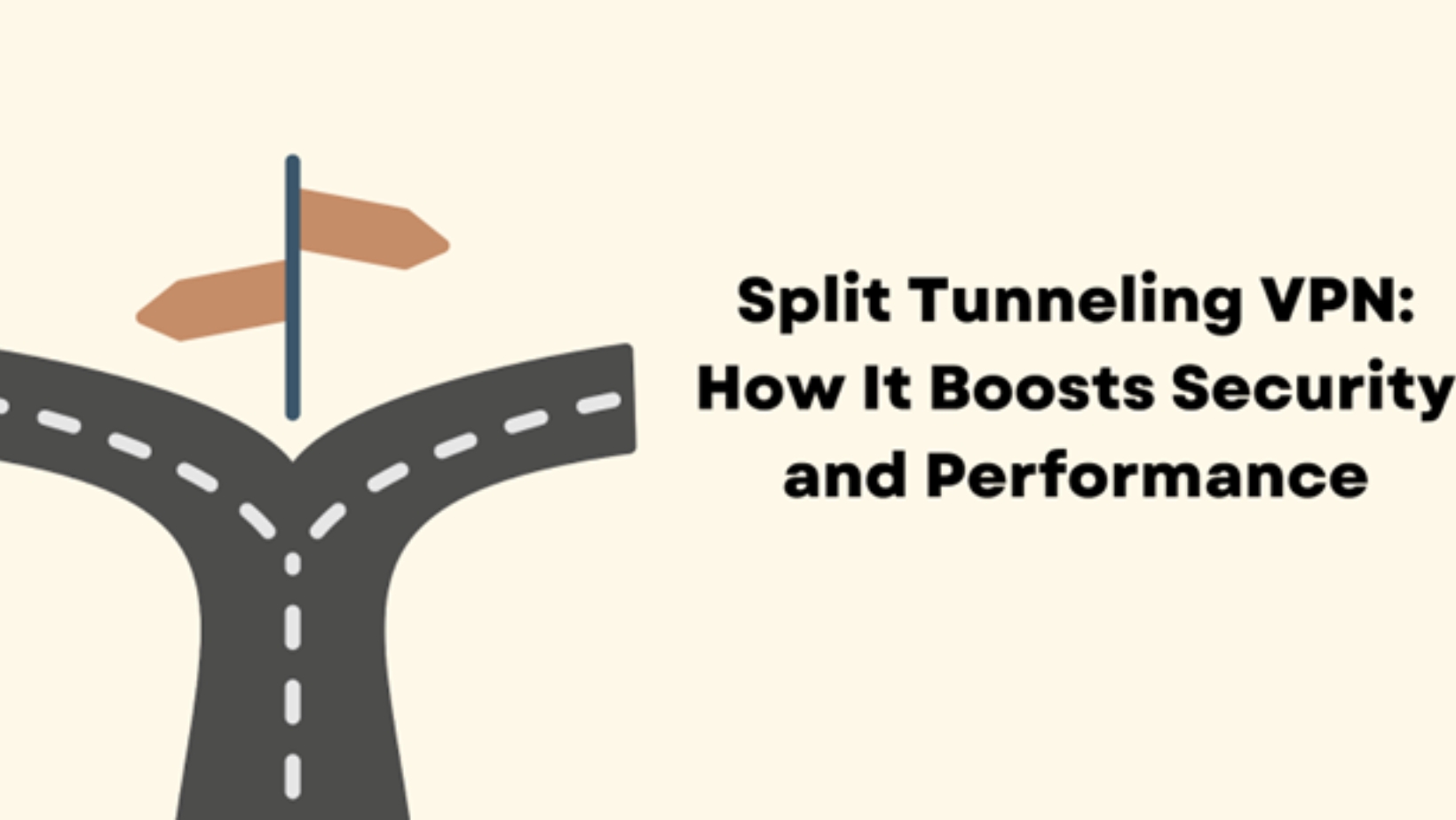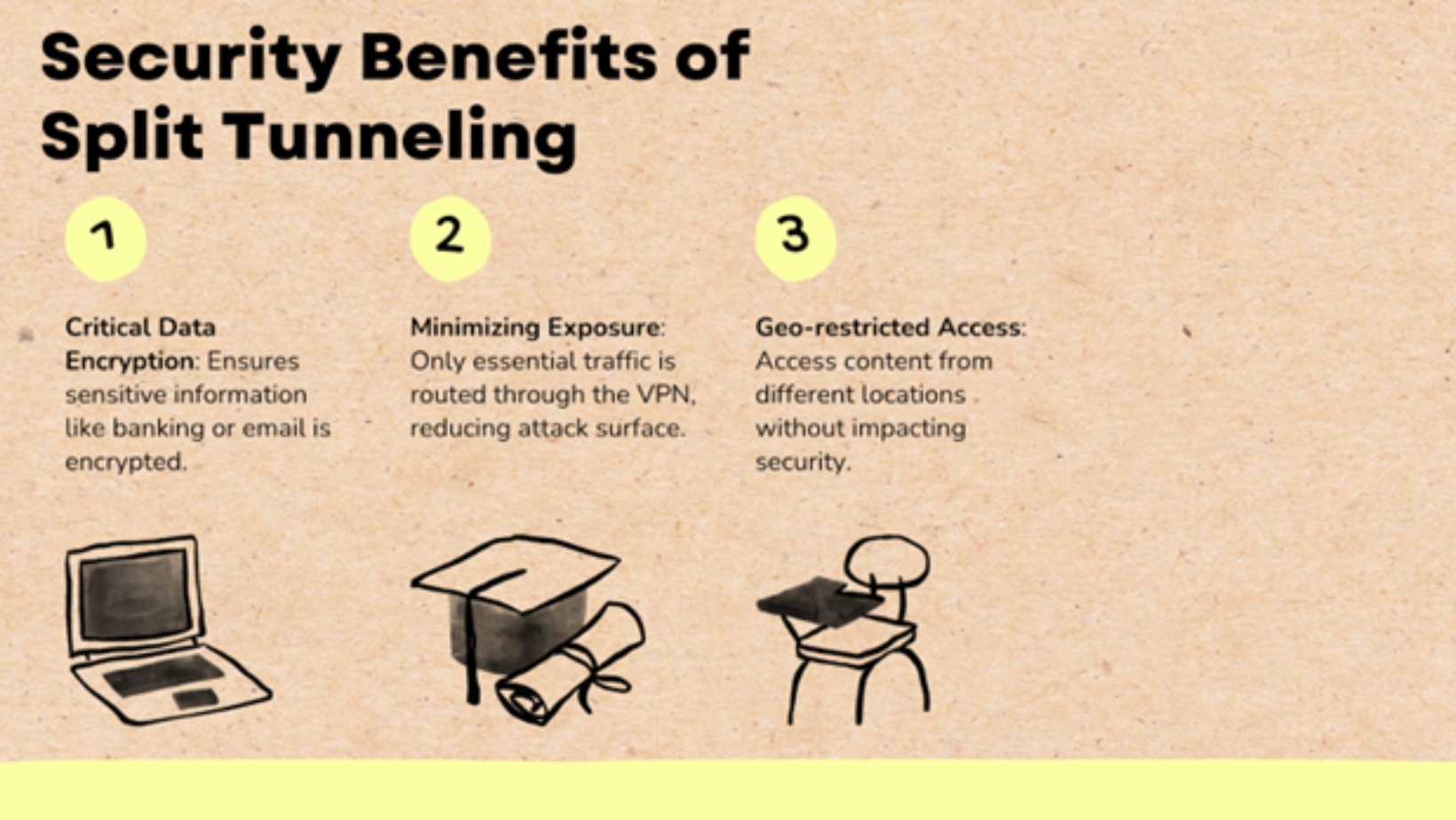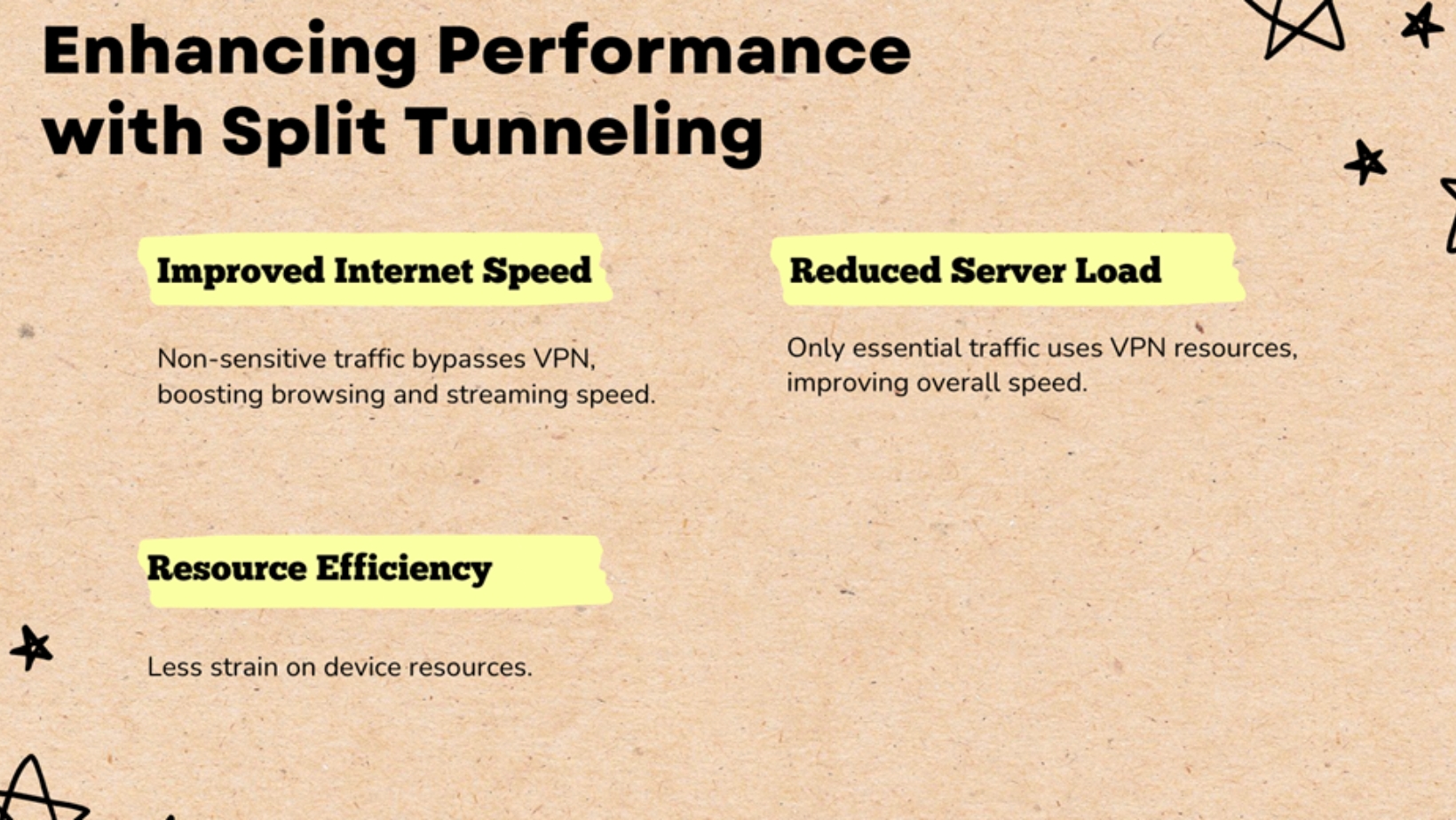
As more people turn to VPNs to safeguard their online privacy, understanding the features that make them effective is crucial. One such feature, split tunneling, plays a key role in optimizing both security and performance.
While many are familiar with basic VPN functions, split tunneling allows users to control which internet traffic goes through the VPN tunnel and which does not. This ability to route certain traffic outside the VPN can enhance both your internet speed and the security of sensitive data.
In this article, we’ll dive into how split tunneling VPN works, explore its security benefits and performance advantages, and provide real-world examples of when this feature can be most useful.
What is Split Tunneling in VPN?
Split tunneling is a feature that allows users to choose which applications or websites are routed through the VPN tunnel and which are accessed directly via the regular internet connection. This is in contrast to traditional VPNs, which route all traffic through the VPN, regardless of whether it needs to be encrypted or not.
For example, if you’re using a VPN to secure your online banking session but don’t want to slow down your internet speed while browsing social media, split tunneling gives you the option to send the banking traffic through the VPN while allowing other traffic, like social media or streaming sites, to go directly through your internet connection.
The Security Benefits of Split Tunneling
1. Protecting Sensitive Data
The primary advantage of using a VPN is securing your sensitive data by encrypting it before it reaches the internet. Split tunneling enhances this by ensuring that only critical data—such as personal information, banking credentials, or login details—flows through the VPN tunnel, reducing exposure to potential threats.

For instance, if you’re working remotely and accessing confidential business documents, split tunneling can ensure that this traffic is encrypted and secure. Meanwhile, less sensitive activities, like streaming or checking social media, can bypass the VPN without compromising security.
2. Minimizing Exposure
Split tunneling allows you to minimize the attack surface by keeping low-risk activities outside the VPN. Since not all data needs the high level of protection that a VPN provides, the feature ensures that only essential traffic, such as corporate email or private communications, is secured while everything else moves freely.
For example, if you’re watching YouTube or browsing websites for entertainment, these activities can be done without encrypting the data, reducing the load on the VPN connection and increasing browsing speed.
3. Geo-restricted Content Access
Split tunneling can also help bypass geo-restrictions. For example, if you want to access a local website without the influence of your VPN’s server location, split tunneling allows you to access that site without the VPN’s interference. This can be especially useful when accessing streaming services, where you may want to route media traffic through the VPN for privacy but access local websites without it.
The Performance Advantages of Split Tunneling
1. Improved Speed and Bandwidth
One of the most significant benefits of split tunneling is its ability to improve internet speed. Since VPNs often slow down internet traffic by encrypting all data, split tunneling reduces that load by only encrypting essential traffic.

By allowing non-sensitive traffic to bypass the VPN, users can enjoy faster speeds for activities like streaming, browsing, or gaming, all while maintaining a secure connection for sensitive tasks. This is especially crucial for gamers, who need the fastest speeds possible without sacrificing security.
2. Reduced Server Load
When all internet traffic goes through a VPN, it puts pressure on the VPN’s server, which could lead to slower speeds and occasional lag. Split tunneling distributes the load, enabling the VPN server to focus on encrypting only high-priority data, leaving other non-sensitive traffic to flow freely and faster through the standard connection.
This becomes especially important for users who rely on a shared VPN service, where high traffic volumes can impact everyone’s connection. With split tunneling, only essential users use the VPN, leaving the rest of the network unaffected.
3. Efficient Resource Usage
Another advantage is that system resources are used more efficiently. When you use a VPN for all your activities, the system has to encrypt and decrypt a massive amount of data. By using split tunneling, you can ensure that only critical activities (e.g., work, banking) are encrypted, reducing the strain on your device and maintaining optimal system performance for other tasks.
Most Use Cases for Split Tunneling
1. Remote Workers
For remote workers, split tunneling is invaluable. It allows them to securely access company resources while maintaining a fast, unrestricted internet connection for personal tasks, such as checking email or browsing the web. This separation of traffic helps maintain a healthy balance between security and performance.
2. Gamers
Gamers often rely on fast and stable connections. With split tunneling, they can route their gaming traffic through the VPN for added security while letting other activities, such as streaming or browsing, use the regular internet connection for the best speeds.
3. Streaming Enthusiasts
Streaming users also benefit from split tunneling. They can access content from different countries by routing traffic through a VPN for specific services, while still using their regular internet connection for other browsing tasks. This helps avoid buffering or slow speeds when watching shows or movies online.
4. Business Travelers
Business travelers can use split-tunneling to securely access corporate data while still using the internet for other activities. For example, they can access their company’s VPN for emails and documents but bypass the VPN when checking local news or using location-based apps.
Potential Drawbacks of Split Tunneling
While split tunneling is highly useful, it does come with some drawbacks:
- Reduced Security for Non-VPN Traffic: Traffic that bypasses the VPN is not encrypted, which can expose it to potential threats. This is why it’s crucial to choose which traffic should bypass the VPN carefully.
- Complexity: Setting up split tunneling can be complicated for beginners. Some VPN services offer easy-to-use interfaces, but others may require manual configuration, which can be challenging for non-technical users.
Conclusion
In summary, split tunneling VPN provides a practical solution for users looking to optimize both security and performance. Whether you’re a remote worker needing secure access to company resources, a gamer looking for faster speeds, or a business traveler managing sensitive data, split tunneling offers a flexible and efficient way to enhance your VPN experience.
By understanding how and when to use split tunneling, you can take full advantage of both security and performance benefits, ensuring a smoother and more efficient online experience.





